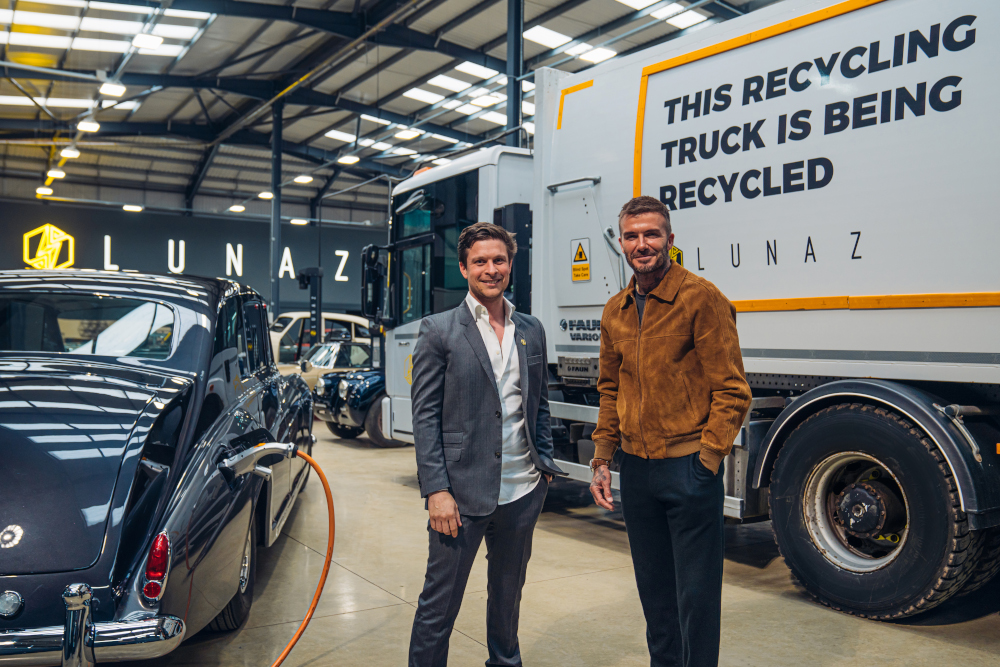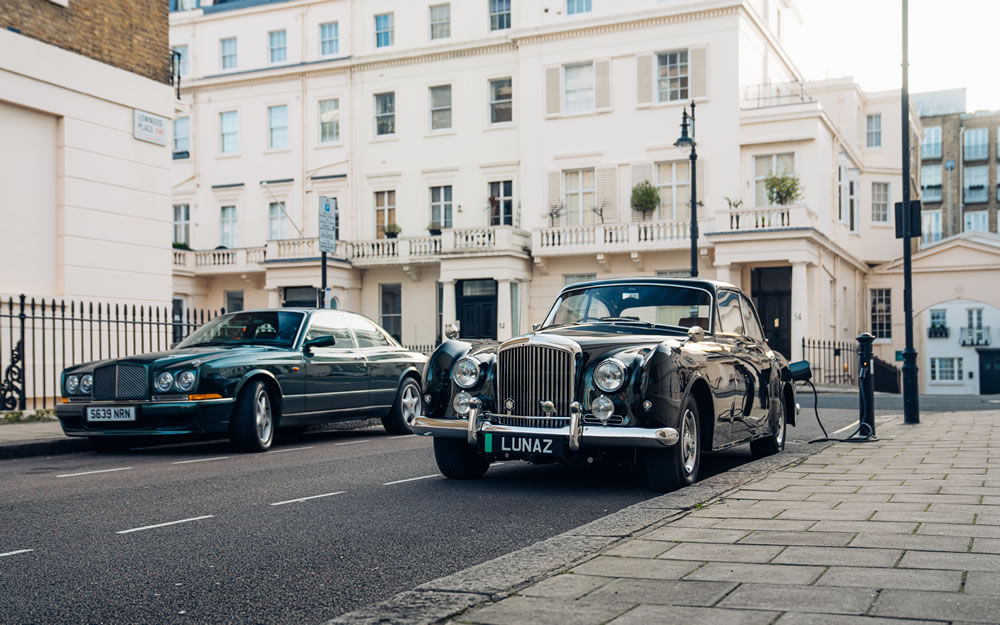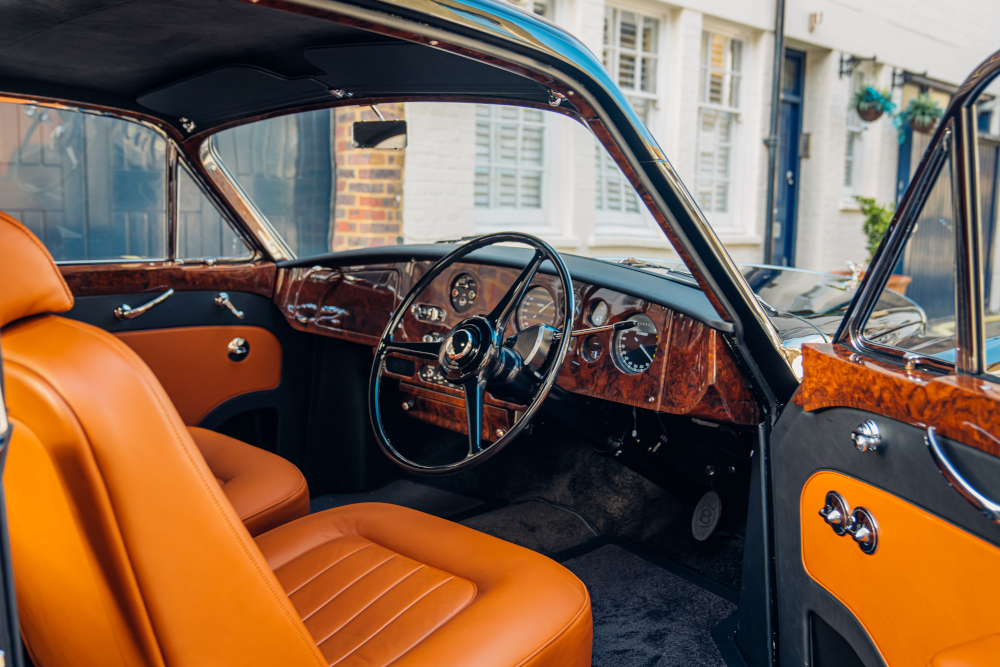The appeal and mystique of classic cars – in fact, the whole point of them – is that they literally don’t make them like that anymore. But while their looks, materials, driving characteristics and mechanical foibles can be indulged as charming anachronisms, they’re increasingly out of step with the modern world in one crucial respect: the old, inefficient internal combustion engine under the bonnet. As a result, many enthusiasts and potential owners can find themselves facing an uneasy trade-off between their motoring passion and their environmental principles.
But there is a solution. Since 2018, pioneering British company Lunaz has been converting some of the world’s rarest, most prestigious classic cars to fully electric power in its research and manufacturing facility at Silverstone. To date, it’s applied its unique upcycling process to storied models including the Rolls-Royce Phantom V, Aston Martin DB6, Bentley S1 Flying Spur and S2 Continental, Jaguar E-Type and the original Range Rover.
“I believe every vehicle has the potential to live at least two lives,” says founder David Lorenz. “Upcycling can help us plot a more sustainable path to a decarbonised future. This is sustainability without functional compromise.”

The Lunaz upcycling process, developed and undertaken entirely in-house, is fast becoming the de facto ‘gold standard’ for electrification projects involving the world’s most prestigious marques. It’s designed to produce a Concours-standard vehicle that also meets the company’s three key requirements for an upcycled electric vehicle: usability, reliability and sustainability.
The process begins starts with a detailed inspection and assessment to determine the chassis, powertrain and suspension configurations. Lunaz engineers use 3D scanning to create detailed CAD models as the basis for any renovation and reconstruction work required.
The car body is then stripped down to a bare metal shell and returned to as-new condition using traditional coachbuilding and restoration techniques. Any external and internal plastics are repaired and recoated: anything that can’t be reused, down to the nylon in the seatbelt cord, is recycled.

The internal combustion engine and its associated systems, lubricants and other fluids are carefully removed and reclaimed, then replaced with Lunaz’s proprietary fully electric powertrain. The modular design allows engineers to adjust individual components to perfectly reflect the car’s innate character, and the owner’s personal preferences. The battery cells, inverters and motors are all original equipment made to Lunaz’s specification by top European Tier 1 suppliers.
Other vital systems, including brakes, steering, suspension and electrics, are all given Lunaz’s ‘full modernisation’ treatment to bring them into line with current safety standards and driver expectations.
In its new incarnation, the car retains its essential character and luxurious feel. Yet in keeping with the zero-emissions powertrain, the rejuvenated interior often incorporates a much higher proportion of sustainable materials than the original. In the S2 Bentley Continental, for example, the seat leather is made from hides tanned using naturally fallen olive leaves, the carpets are pure regenerated nylon fibre with a backing made from 100 per cent recycled plastic bottles, and all the wood veneers are from sustainable sources, certified by the Forestry Stewardship Council.

And these magnificent cars are part of a wider mission for Lorenz and his team, whose backers include Alexander Dellal, the Reuben and Barclay families and, most famously, David Beckham, who commissioned a Lunaz-converted Jaguar XK140 for his son Brooklyn and daughter-in-law Nicola as a wedding gift.
“When we embarked on the Lunaz journey in 2018, it was our mission to upcycle internal combustion engined vehicles of all kinds into clean-air solutions,” says Lorenz. Which is why the company’s also working at the other end of the automotive spectrum, turning obsolescent diesel-powered refuse trucks into smart upcycled electric vehicles (UEVs). These are cleaner and less expensive than their all-new equivalents, saving money for local taxpayers; and like the classic cars, they’re also safer, better equipped and more comfortable for the people who use them. In fact, the UEVs incorporate many of the materials and methods used in Lunaz’s classic car projects.
“Electrification answers the questions of usability, reliability and sustainability and empowers owners to use their cars every day,” says Lorenz. “A Lunaz classic car isn’t just for this generation: it’s to be driven and enjoyed for many years to come.”
All images supplied by Lunaz










